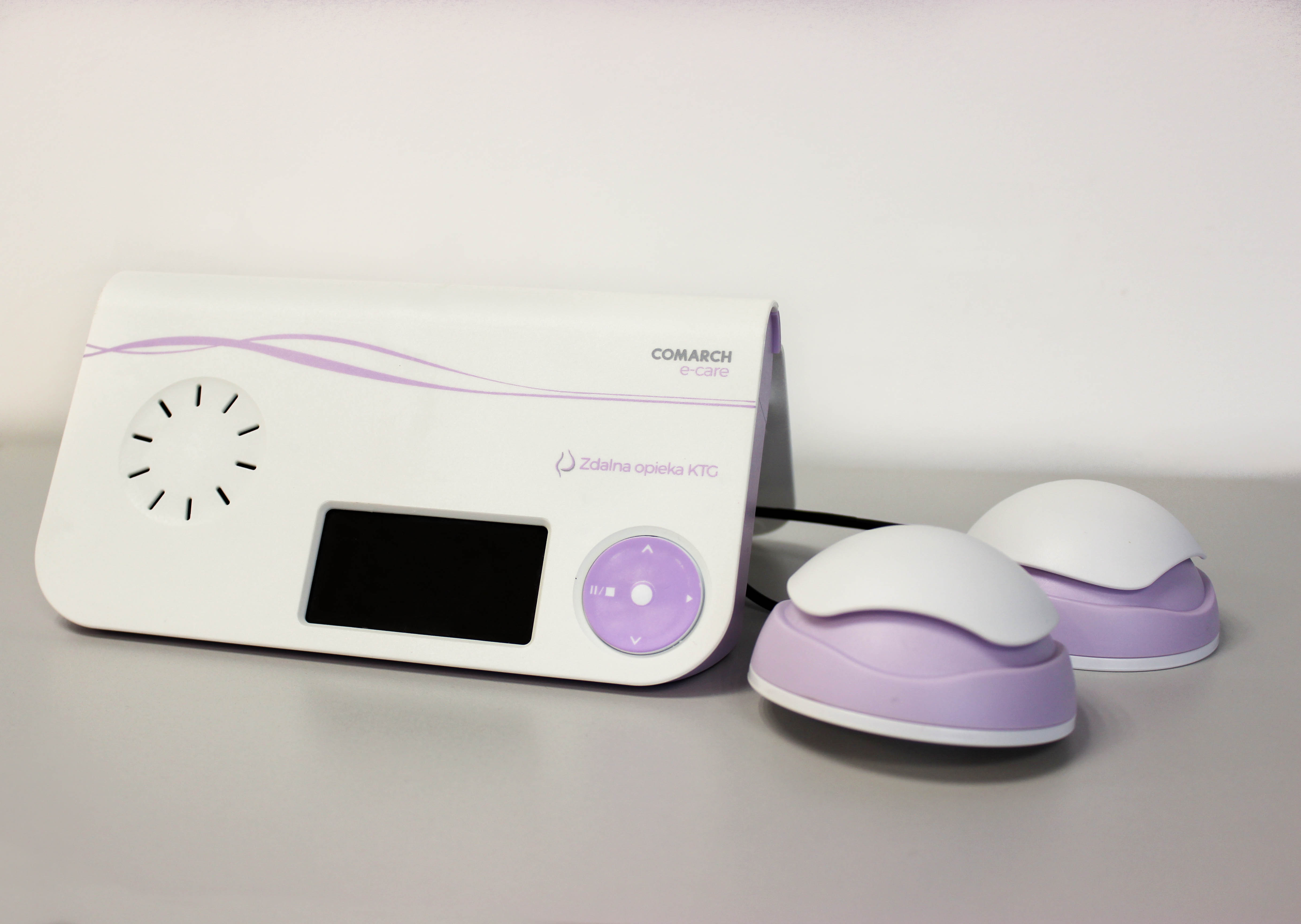Remote Maternity Care – Questions and Answers

Until recently, CTG had been performed exclusively in medical centers. Owing to telemedicine solutions by Comarch Healthcare, the test can nowadays be performed at home too.

What is Remote Maternity Care?
Remote Maternity Care is a complex service dedicated to women in the 36th to 42nd weeks of pregnancy. It involves a cardiotocography (CTG) examination performed by the pregnant woman using a mobile device at home.
What is CTG?
CTG is the continuous registration of the fetal heart rate, in parallel with a recording of the uterine contraction function, during the pregnancy and labor. It allows any risks to the fetus' life to be recognized early. CTG is the fundamental, most popular, non-invasive method of monitoring the baby’s health during pregnancy and in the perinatal period.
Can Every Pregnant Woman Use Remote Maternity Care?
The inclusion criteria for patients include completion of week 36 of pregnancy, single pregnancy, and a consultation with the obstetrician. Before using the service, the patient must visit their doctor or midwife for qualification and training. During the consultation, the patient is interviewed and recorded in the e-Care system. The records include history of previous pregnancies, medical history, and current medication. Once registration has been completed, the woman learns to operate the device and to perform the test correctly.
What are the Components of Remote Maternity Care?
The Comarch solution comprises a mobile CTG device, e-Care platform (owing to which medical staff can receive and interpret test results), and e-Care Remote Medical Care Center, namely a specialized unit at the iMed24 Medical Center, working 24/7, where staff monitor patients remotely.
How Does the CTG Device Work?
CTG records the baby’s heart rate and uterine contraction activity in a non-invasive manner. The test takes 30 minutes; apart from performing the test, the woman can listen to the baby’s heart rate at any time.
The kit needed for a home CTG test comprises a CTG device and two pads to be placed on the pregnant woman’s stomach. One pad serves for recording the heart rate, and the other takes readings of uterine contraction activity. Other components include belts that keep the pads in place, a charger that also sends the test record to the Remote Medical Care Center, and a case in which to store the device.
How is a CTG Test Performed?
Before starting the test, read the user manual and lie comfortably on your left or right side, so that the baby’s pulse can be heard best. The device is to be placed on a hard surface, assuring free access.
In order to perform the test, select the test option in the menu. The start screen will display automatically.
The most important element of the test involves correctly locating the baby’s pulse.
How Long Does the Test Take?
Every test lasts 30 minutes. When measurement begins, the time is counted down automatically. After the end of the test, the device displays information about sending the result.

At What Time Should the Test be Performed?
The service is available 24/7; the patient can perform CTG at any time.
Can I Listen to my Baby's Heartbeat Without Performing a Test?
Yes. If you press pause during the test, the test is cancelled. The device only sends complete 30-minute records, so you can listen to you baby’s heartbeat at any time.
How is the Device Charged?
Use only the charger from the kit. Full charging takes about four hours. In order to perform the test, the battery must be at least 30% full.
How is the Test Result Sent to the Specialist?
When the test is completed, the patient should connect the device to the charger. The result will be sent to the e-Care Center over the mobile phone network, so no internet access is required.
What Happens if the Test Result is Incorrect?
All test results are evaluated by medical staff qualified to do so. After evaluation, the patient always receives feedback, with action taken in the event of irregularities.
Who Evaluates CTG Tests?
Interpretation is carried out by a gynecologist or a midwife.
What if There Are Problems Performing the Test or with the Device, or if any Doubts Arise When Using the Service?
All patients covered by remote maternity care have access to e-Care Remote Medical Care Center, open 24/7, and can contact medical staff in the event of any problems or doubts. Specialists will certainly take relevant action.
What Conditions Can Affect the Test Result?
In order to perform the test correctly, perform it in a quiet, peaceful place, after a meal when the baby is active. The test should not be carried out within 30 minutes of physical effort, or after drinking beverages containing caffeine.

What is the Advantage of Comarch CTG as Compared to Other Devices Available on the Market?
The device is a certified medical product, and performs the measurement using the acoustic method, which is absolutely safe for both woman and baby. Moreover, the solution is based on the knowledge and experience of specialists in many fields, including medicine, management, and IT. Our priority is to develop the service according to the most rigorous standards of safety and quality.
What are the benefits of Remote Care?
With remote care the patient can perform the test at home, without queuing or stress, at any time, and in friendly conditions. Baby monitoring allows the woman to feel more secure, particularly as 24/7 professional care is assured. It also means savings in time and money, and gives other family members the opportunity to engage with the unborn baby.
If you need further information about Remote Materinity Care, go to dedicated page >>